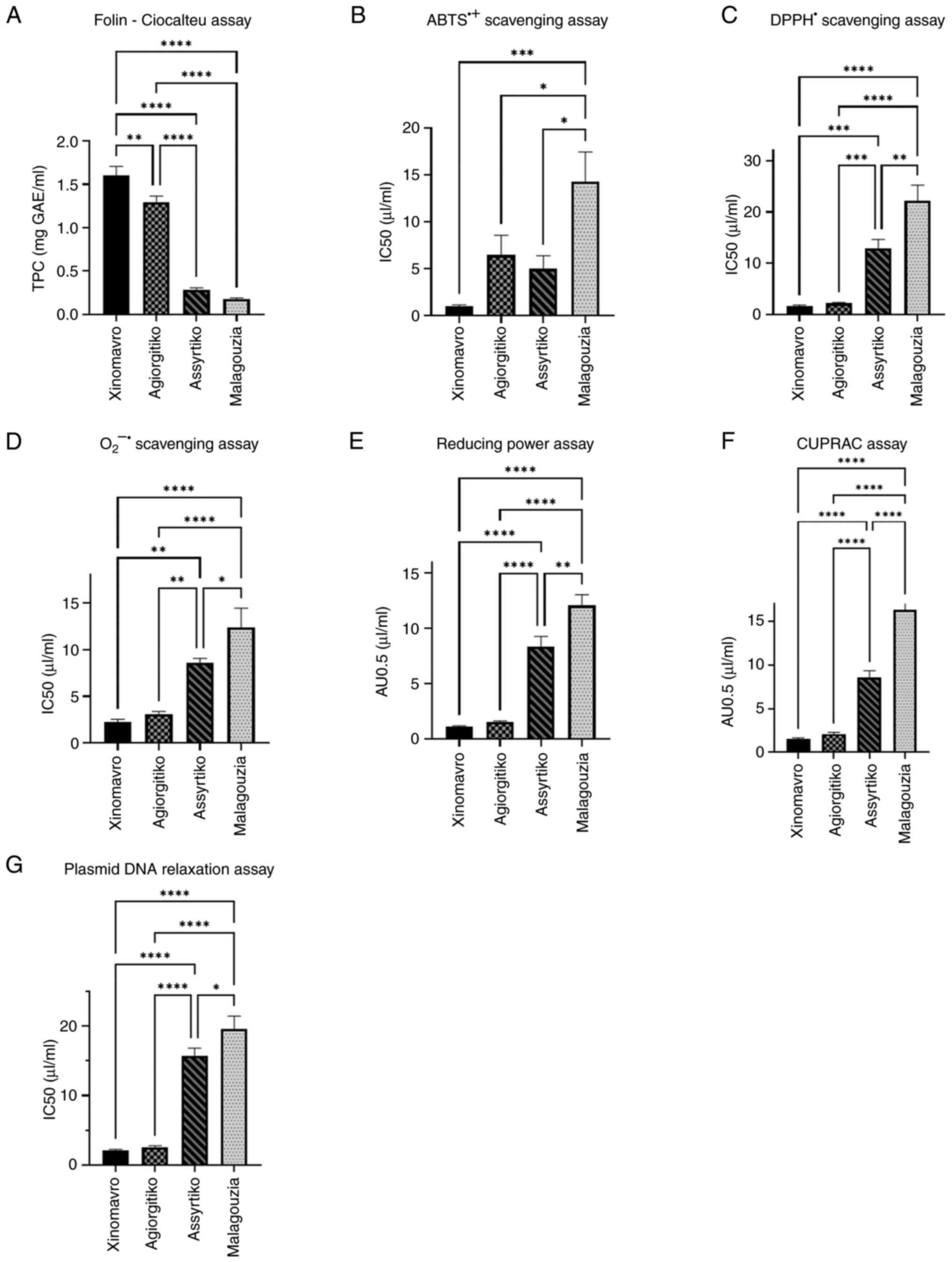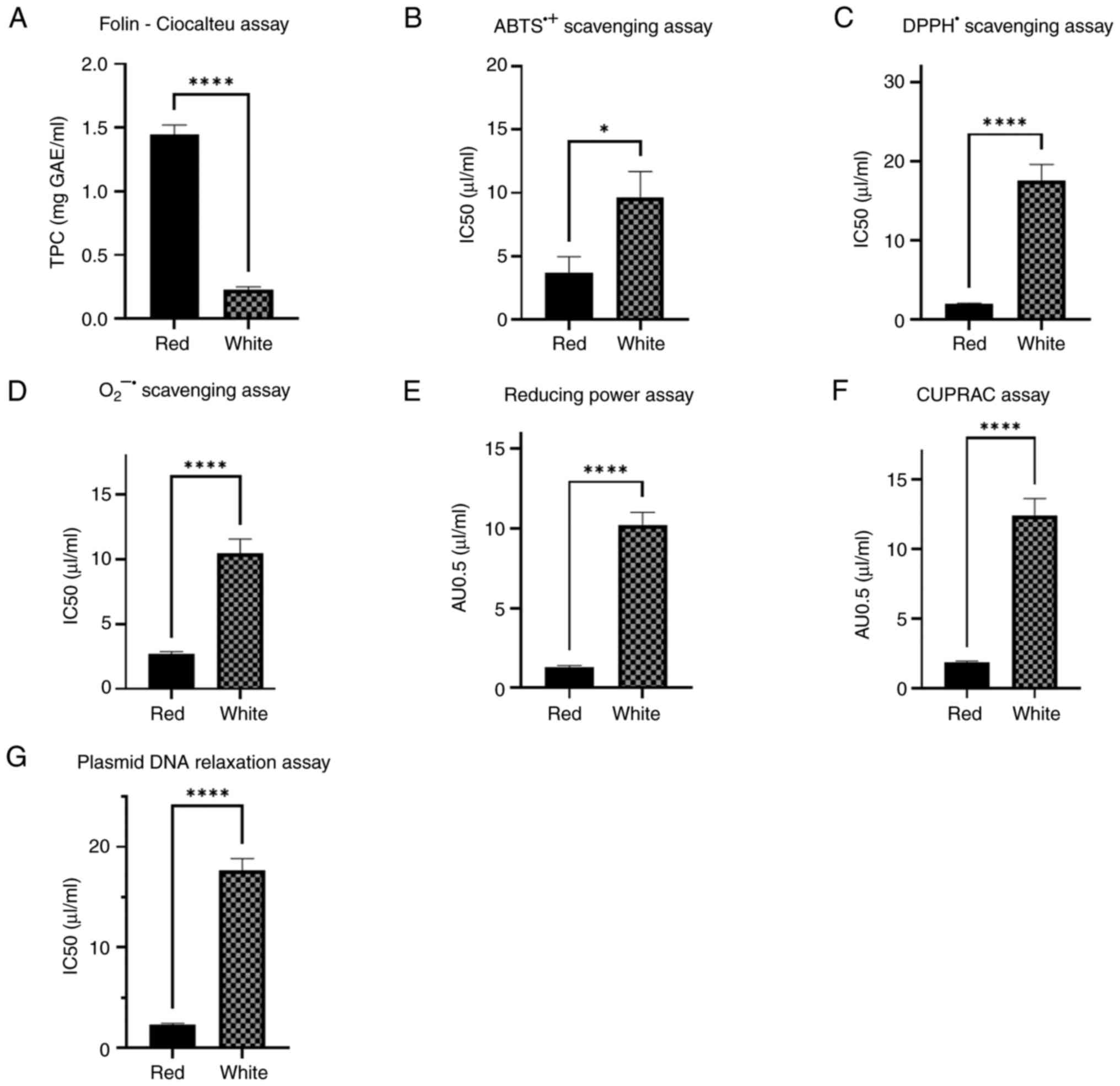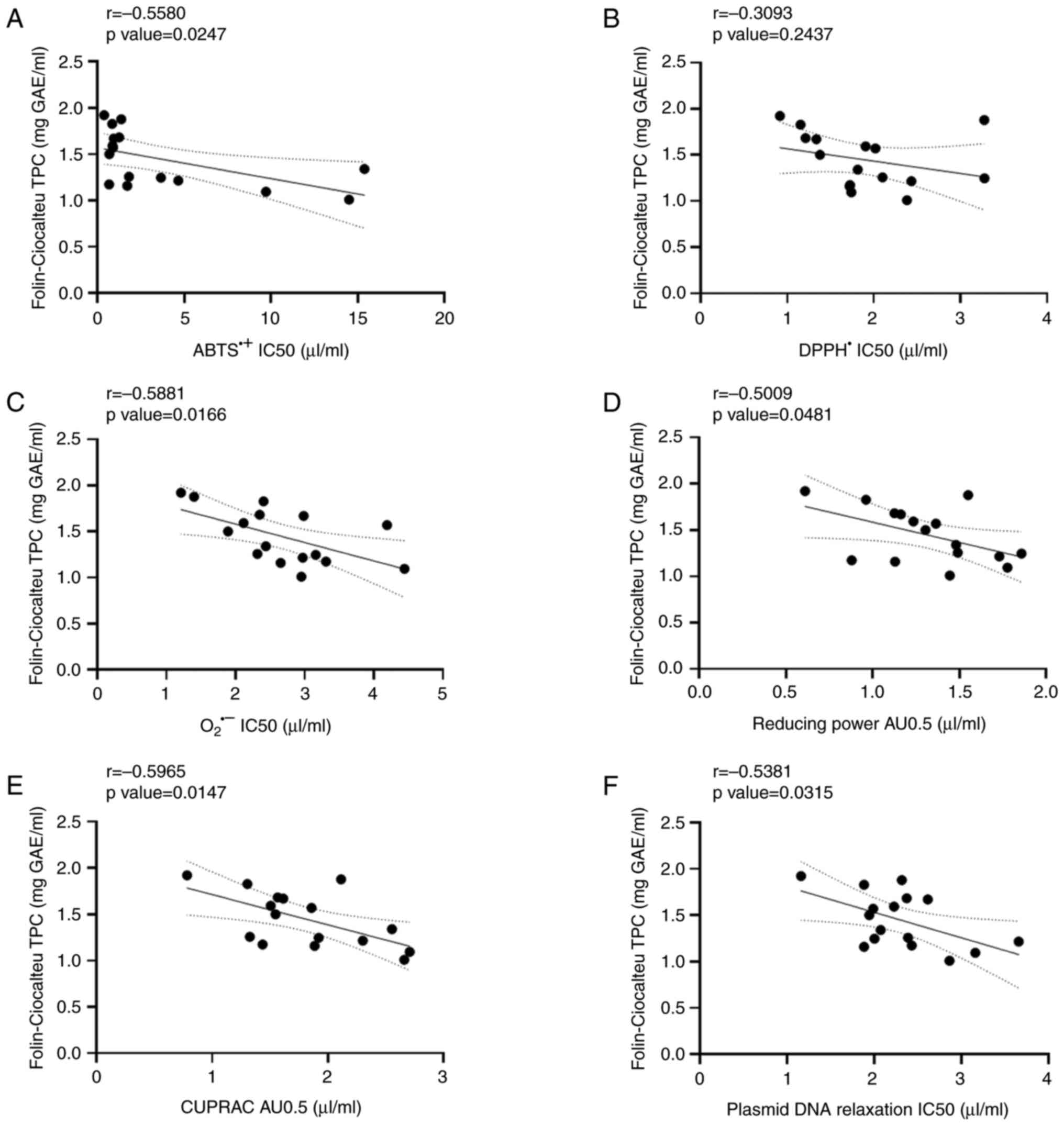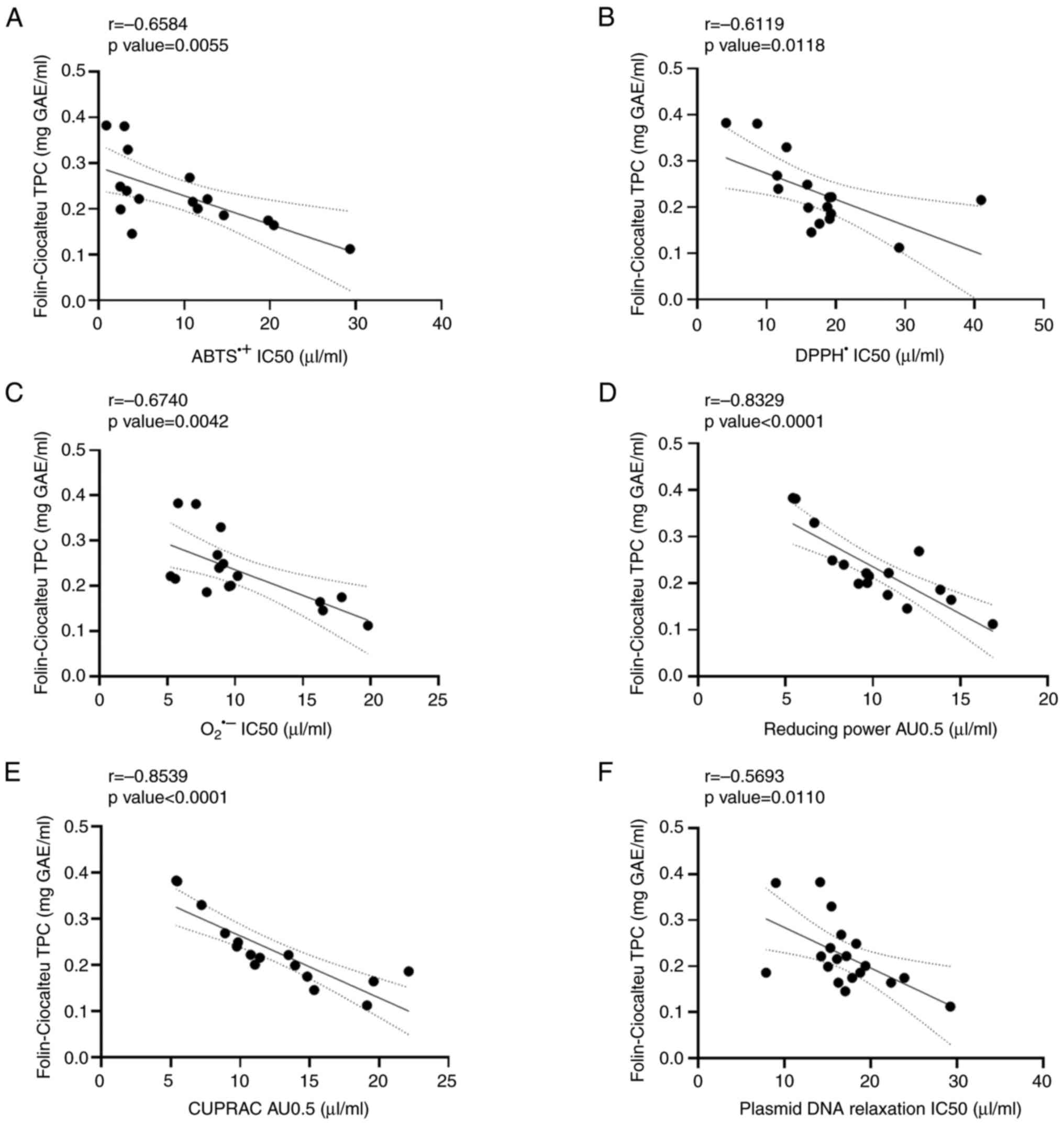|
1
|
Buja LM: The history, science, and art of
wine and the case for health benefits: Perspectives of an
oenophilic cardiovascular pathologist. Cardiovasc Pathol.
60(107446)2022.PubMed/NCBI View Article : Google Scholar
|
|
2
|
Corsinovi P and Gaeta D: The European wine
policies: Regulations and strategies. Palgrave Handb Wine Ind Econ.
265–290. 2019.
|
|
3
|
European Commission:sDirectorate-General
for Agriculture and Rural Development: Wine production and opening
stocks. Available from: https://agridata.ec.europa.eu/extensions/DashboardWine/WineProduction.html.
Accessed October 3, 2023].
|
|
4
|
Castaldo L, Narváez A, Izzo L, Graziani G,
Gaspari A, Minno GD and Ritieni A: Red wine consumption and
cardiovascular health. Molecules. 24(3626)2019.PubMed/NCBI View Article : Google Scholar
|
|
5
|
Markoski MM, Garavaglia J, Oliveira A,
Olivaes J and Marcadenti A: Molecular properties of red wine
compounds and cardiometabolic benefits. Nutr Metab Insights.
9:51–57. 2016.PubMed/NCBI View Article : Google Scholar
|
|
6
|
Giovinazzo G, Carluccio MA and Grieco F:
Wine polyphenols and health. In: Bioactive Molecules in Food:
Reference Series in Phytochemistry. Mérillon JM and Ramawat K
(eds). Springer, Cham. pp1135-1155, 2019.
|
|
7
|
Di Renzo L, Marsella LT, Carraro A,
Valente R, Gualtieri P, Gratteri S, Tomasi D, Gaiotti F and De
Lorenzo A: Changes in LDL oxidative status and oxidative and
inflammatory gene expression after red wine intake in healthy
people: A randomized trial. Mediators Inflamm.
2015(317348)2015.PubMed/NCBI View Article : Google Scholar
|
|
8
|
Liberale L, Bonaventura A, Montecucco F,
Dallegri F and Carbone F: Impact of red wine consumption on
cardiovascular health. Curr Med Chem. 26:3542–3566. 2017.PubMed/NCBI View Article : Google Scholar
|
|
9
|
Poli A, Marangoni F, Avogaro A, Barba G,
Bellentani S, Bucci M, Cambieri R, Catapano AL, Costanzo S,
Cricelli C, et al: Moderate alcohol use and health: A consensus
document. Nutr Metab Cardiovasc Dis. 23:487–504. 2013.PubMed/NCBI View Article : Google Scholar
|
|
10
|
Merkyte V, Longo E, Windisch G and Boselli
E: Phenolic compounds as markers of wine quality and authenticity.
Foods. 9(1785)2020.PubMed/NCBI View Article : Google Scholar
|
|
11
|
Shah MH, Rafique R, Rafique T, Naseer M,
Khalil U, Rafique R, Shah MH, Rafique R, Rafique T, Naseer M, et
al: Effect of climate change on polyphenols accumulation in
grapevine. 2021.
|
|
12
|
Gutiérrez-Escobar R, Aliaño-González MJ
and Cantos-Villar E: Wine polyphenol content and its influence on
wine quality and properties: A review. Molecules.
26(718)2021.PubMed/NCBI View Article : Google Scholar
|
|
13
|
Haseeb S, Alexander B, Santi RL, Liprandi
AS and Baranchuk A: What's in wine? A clinician's perspective.
Trends Cardiovasc Med. 29:97–106. 2019.PubMed/NCBI View Article : Google Scholar
|
|
14
|
Zhang B, Cai J, Duan CQ, Reeves MJ and He
F: A review of polyphenolics in oak woods. Int J Mol Sci.
16:6978–7014. 2015.PubMed/NCBI View Article : Google Scholar
|
|
15
|
Rasines-Perea Z, Jacquet R, Jourdes M,
Quideau S and Teissedre PL: Ellagitannins and
flavano-ellagitannins: Red wines tendency in different areas,
barrel origin and ageing time in barrel and bottle. Biomolecules.
9(316)2019.PubMed/NCBI View Article : Google Scholar
|
|
16
|
Martínez-Gil A, Del Alamo-Sanza M and
Nevares I: Evolution of red wine in oak barrels with different
oxygen transmission rates. Phenolic compounds and colour. LWT.
158(113133)2022.
|
|
17
|
Pfahl L, Catarino S, Fontes N, Graça A and
Ricardo-Da-Silva J: Effect of barrel-to-barrel variation on color
and phenolic composition of a red wine. Foods.
10(1669)2021.PubMed/NCBI View Article : Google Scholar
|
|
18
|
Vineyards in the EU - statistics -
Statistics Explained, 2022. Available from: https://ec.europa.eu/eurostat/statistics-explained/index.php?title=Vineyards_in_the_EU_-_statistics.
Accessed July 3, 2023].
|
|
19
|
Biniari K, Xenaki M, Daskalakis I, Rusjan
D, Bouza D and Stavrakaki M: Polyphenolic compounds and
antioxidants of skin and berry grapes of Greek Vitis vinifera
cultivars in relation to climate conditions. Food Chem.
307(125518)2020.PubMed/NCBI View Article : Google Scholar
|
|
20
|
Kazou M, Pagiati L, Dotsika E, Proxenia N,
Kotseridis Y and Tsakalidou E: The microbial terroir of the nemea
zone agiorgitiko cv.: A first metataxonomic approach. Aust J Grape
Wine Res. 2023:1–18. 2023.
|
|
21
|
Koufos GC, Mavromatis T, Koundouras S,
Fyllas NM, Theocharis S and Jones GV: Greek wine quality assessment
and relationships with climate: Trends, future projections and
uncertainties. Water (Switzerland). 14(573)2022.
|
|
22
|
Frankel C: Volcanoes and Wine: From
Pompeii to Napa. Chicago, The University of Chicago Press,
2019.
|
|
23
|
Skiada FG, Grigoriadou K and Eleftheriou
EP: Micropropagation of Vitis vinifera L. cv. ‘Malagouzia’ and
‘Xinomavro’. Cent Eur J Biol. 5:839–852. 2010.
|
|
24
|
Veskoukis A, Kerasioti E, Priftis A, Kouka
P, Spanidis Y, Makri S and Kouretas D: A battery of translational
biomarkers for the assessment of the in vitro and in vivo
antioxidant action of plant polyphenolic compounds: The biomarker
issue. Curr Opin Toxicol. 13:99–109. 2019.
|
|
25
|
Singleton LV, Orthofer R, Lamuela-Raventós
MR, Singleton VL, Orthofer R and Lamuela-Raventós RM: [14] Analysis
of total phenols and other oxidation substrates and antioxidants by
means of folin-ciocalteu reagent. Methods in Enzymology.
299:152–178. 1999.
|
|
26
|
Brand-Williams W, Cuvelier ME and Berset
C: Use of a free radical method to evaluate antioxidant activity.
LWT Food Sci Technol. 28:25–30. 1995.
|
|
27
|
Cano A, Hernández-Ruíz J, García-Cánovas
F, Acosta M and Arnao MB: An end-point method for estimation of the
total antioxidant activity in plant material. Phytochem Anal.
9:196–202. 1998.
|
|
28
|
Gülçin I, Küfrevioǧlu ÖI, Oktay M and
Büyükokuroǧlu ME: Antioxidant, antimicrobial, antiulcer and
analgesic activities of nettle (Urtica dioica L.). J
Ethnopharmacol. 90:205–215. 2004.PubMed/NCBI View Article : Google Scholar
|
|
29
|
Yen GC and Duh PD: Antioxidative
properties of methanolic extracts from peanut hulls. J Am Oil Chem
Soc. 70:383–386. 1993.
|
|
30
|
Apak R, Güçlü K, Özyürek M and Karademir
SE: Novel total antioxidant capacity index for dietary polyphenols
and vitamins C and E, using their cupric ion reducing capability in
the presence of neocuproine: CUPRAC method. J Agric Food Chem.
52:7970–7981. 2004.PubMed/NCBI View Article : Google Scholar
|
|
31
|
Paul T, Young MJ, Hill IE and Ingold KU:
Strand cleavage of supercoiled DNA by water-soluble peroxyl
radicals. The overlooked importance of peroxyl radical charge.
Biochemistry. 39:4129–4135. 2000.PubMed/NCBI View Article : Google Scholar
|
|
32
|
Aguilar TAF, Navarro CBH and Pérez JAM:
Endogenous antioxidants: A review of their role in oxidative
stress. A master regul oxidative stress-transcr factor Nrf2,
2016.
|
|
33
|
Nimse SB and Pal D: Free radicals, natural
antioxidants, and their reaction mechanisms. RSC Adv.
5:27986–28006. 2015.
|
|
34
|
Buljeta I, Pichler A, Šimunović J and
Kopjar M: Beneficial effects of red wine polyphenols on human
health: Comprehensive review. Curr Issues Mol Biol. 45:782–798.
2023.PubMed/NCBI View Article : Google Scholar
|
|
35
|
Ditano-Vázquez P, Torres-Peña JD,
Galeano-Valle F, Pérez-Caballero AI, Demelo-Rodríguez P,
Lopez-Miranda J, Katsiki N, Delgado-Lista J and
Alvarez-Sala-Walther LA: The fluid aspect of the mediterranean diet
in the prevention and management of cardiovascular disease and
diabetes: The role of polyphenol content in moderate consumption of
wine and olive oil. Nutrients. 11(2833)2019.PubMed/NCBI View Article : Google Scholar
|
|
36
|
Barbalho SM, Ottoboni AMM, Fiorini AMR,
Guiguer ÉL, Nicolau CCT, de Alvares Goulart R and Flato UAP: Grape
juice or wine: Which is the best option? Crit Rev Food Sci Nutr.
60:3876–3889. 2020.PubMed/NCBI View Article : Google Scholar
|
|
37
|
Li L and Sun B: Grape and wine polymeric
polyphenols: Their importance in enology. Crit Rev Food Sci Nutr.
59:563–579. 2019.PubMed/NCBI View Article : Google Scholar
|
|
38
|
Tekos F, Skaperda Z, Vardakas P, Kyriazi
D, Maravelis GC, Poulas K, Taitzoglou IA, Nepka C and Kouretas D:
Redox biomarkers assessment after oral administration of wine
extract and grape stem extract in rats and mice. Molecues.
28(1574)2023.PubMed/NCBI View Article : Google Scholar
|
|
39
|
Myrtsi ED, Koulocheri SD, Iliopoulos V and
Haroutounian SA: High-throughput quantification of 32 bioactive
antioxidant phenolic compounds in grapes, wines and vinification
byproducts by LC-MS/MS. Antioxidants (Basel).
10(1174)2021.PubMed/NCBI View Article : Google Scholar
|
|
40
|
Hornedo-Ortega R, González-Centeno MR,
Chira K, Jourdes M and Teissedre PL, Hornedo-Ortega R,
González-Centeno MR, Chira K, Jourdes M and Teissedre PL: Phenolic
compounds of grapes and wines: Key compounds and implications in
sensory perception. Chem Biochem Winemak Wine Stab Aging, 2020.
|
|
41
|
Onache PA, Florea A, Geana EI, Ciucure CT,
Ionete RE, Sumedrea DI and Tița O: Assessment of bioactive phenolic
compounds in musts and the corresponding wines of white and red
grape varieties. Appl Sci. 13(5722)2023.
|
|
42
|
Pandeya A, Rayamajhi S, Pokhrel P and Giri
B: Evaluation of secondary metabolites, antioxidant activity, and
color parameters of Nepali wines. Food Sci Nutr. 6:2252–2263.
2018.PubMed/NCBI View Article : Google Scholar
|
|
43
|
Paixão N, Perestrelo R, Marques JC and
Câmara JS: Relationship between antioxidant capacity and total
phenolic content of red, rosé and white wines. Food Chem.
105:204–214. 2007.
|
|
44
|
Preserova J, Ranc V, Milde D, Kubistova V
and Stavek J: Study of phenolic profile and antioxidant activity in
selected Moravian wines during winemaking process by FT-IR
spectroscopy. J Food Sci Technol. 52:6405–6414. 2015.PubMed/NCBI View Article : Google Scholar
|
|
45
|
Fermo P, Comite V, Sredojević M, Ćirić I,
Gašić U, Mutić J, Baošić R and Tešić Ž: Elemental analysis and
phenolic profiles of selected italian wines. Foods.
10(158)2021.PubMed/NCBI View Article : Google Scholar
|
|
46
|
Zhu L, Zhang Y, Deng J, Li H and Lu J:
Phenolic concentrations and antioxidant properties of wines made
from North American grapes grown in China. Molecules. 17:3304–3323.
2012.PubMed/NCBI View Article : Google Scholar
|
|
47
|
Radeka S, Rossi S, Bestulić E, Budić-Leto
I, Ganić KK, Horvat I, Lukić I, Orbanić F, Jurjević TZ and Dvornik
Š: Bioactive compounds and antioxidant activity of red and white
wines produced from autochthonous croatian varieties: Effect of
moderate consumption on human health. Foods.
11(1804)2022.PubMed/NCBI View Article : Google Scholar
|
|
48
|
Nemzer B, Kalita D, Yashin AY and Yashin
YI: Chemical composition and polyphenolic compounds of red wines:
Their antioxidant activities and effects on human health-a review.
Beverages. 8(1)2021.
|
|
49
|
Tekos F, Makri S, Skaperda ZV, Patouna A,
Terizi K, Kyriazis ID, Kotseridis Y, Mikropoulou EV, Papaefstathiou
G, Halabalaki M and Demetrios K: Assessment of antioxidant and
antimutagenic properties of red and white wine extracts in vitro.
Metab. 11(436)2021.PubMed/NCBI View Article : Google Scholar
|
|
50
|
Lucarini M, Durazzo A, Lombardi-Boccia G,
Souto EB, Cecchini F and Santini A: Wine polyphenols and health:
Quantitative research literature analysis. Appl Sci.
11(4762)2021.
|
|
51
|
Fernández-Pachón MS, Villaño D,
García-Parrilla MC and Troncoso AM: Antioxidant activity of wines
and relation with their polyphenolic composition. Anal Chim Acta.
513:113–118. 2004.
|
|
52
|
Tarko T, Duda-Chodak A, Sroka P, Satora P
and Jurasz E: Polish wines: Characteristics of cool-climate wines.
J Food Compos Anal. 23:463–468. 2010.
|
|
53
|
Li H, Wang X, Li Y, Li P and Wang H:
Polyphenolic compounds and antioxidant properties of selected China
wines. Food Chem. 112:454–460. 2009.
|
|
54
|
Tauchen J, Marsik P, Kvasnicova M,
Maghradze D, Kokoska L, Vanek T and Landa P: In vitro antioxidant
activity and phenolic composition of Georgian, Central and West
European wines. J Food Compos Anal. 41:113–121. 2015.
|
|
55
|
Staško A, Brezová V, Mazúr M, Čertík M,
Kaliňák M and Gescheidt G: A comparative study on the antioxidant
properties of Slovakian and Austrian wines. LWT Food Sci Technol.
41:2126–2135. 2008.
|
|
56
|
Gaschler MM and Stockwell BR: Lipid
peroxidation in cell death. Biochem Biophys Res Commun.
482:419–425. 2017.PubMed/NCBI View Article : Google Scholar
|
|
57
|
Zhu F, Du B and Li J, Zhu F, Du B and Li
J: Aroma compounds in wine. Grape Wine Biotechnol, 2016.
|
|
58
|
Styger G, Prior B and Bauer FF: Wine
flavor and aroma. J Ind Microbiol Biotechnol. 38:1145.
2011.PubMed/NCBI View Article : Google Scholar
|
|
59
|
Liu S, Lou Y, Li Y, Zhao Y, Laaksonen O,
Li P, Zhang J, Battino M, Yang B and Gu Q: Aroma characteristics of
volatile compounds brought by variations in microbes in winemaking.
Food Chem. 420(136075)2023.PubMed/NCBI View Article : Google Scholar
|


















